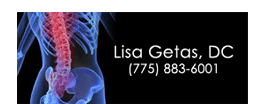Nutrients in Chocolate
It might come as a surprise to learn that chocolate is rich in a variety of nutrients. The life-sustaining, energy-boosting cacao bean was a major part of the Mesoamerican diet because it is a powerhouse of phyto-nutrition, even rivaling fruits and vegetables.
Over the last couple decades, science has developed more sophisticated methods of analyzing the nutritional content of foods in general. These testing methods, as well as other research, have yielded promising bioactive results, and they suggest that cocoa's nutrient profile is quite impressive. The following are just some of the nutrients that the cocoa bean contains:
- Thiamine (Vitamin Bl): Is needed to process carbohydrates, fat, and protein. Every cell of the body requires vitamin B1 to form the body's fuel: adenosine triphosphate (ATP). Nerve cells require vit. B1 in order to function normally. Research indicates it can reverse anemia and possibly help in the prevention of Alzheimer's, canker sores and diabetes, among other things.
- Riboflavin (Vitamin B2): Is a water-soluble vitamin needed to process amino acids and fats, activate vitamin B6 and folic acid, and help convert carbohydrates into adenosine triphosphate(ATP). Under some conditions, vit. B2 can act as an antioxidant. It has been shown to help with migraines, anemia, canker sores and cataracts.
- Niacin (vitamin B3): Is necessary for the process of releasing energy from carbohydrates. It is needed to form fat from carbohydrates and to process alcohol. The niacin form of vit. B3 also regulates cholesterol. Science suggests that niacin is helpful in the treatment of osteoarthritis, acne, high cholesterol/ triglycerides and dysmenorrhea.
- Pantothenic acid (vitamin B5): Is involved in the Kreb's cycle of energy production and is needed to make the neurotransmitter acetylcholine. It is also essential in producing, transporting, and releasing energy from fats. Synthesis of cholesterol (needed to manufacture vitamin D and steroid hormones) depends on pantothenic acid. Pantothenic acid also activates the adrenal glands. Many experts believe pantothenic acid can help control high cholesterol levels and may be of some benefit in treating rheumatoid arthritis.
- Pyridoxine (vitamin B6): Is central to the processing of amino acids and is essential for the production of the hormones, serotonin, melatonin, and dopamine. Because of this, vit B6 is helpful for preventing and/or revers-ing a variety of mental conditions such as depression. In combination with folic acid and vit B12, vitamin B6 lowers homocysteine levels – an amino acid linked to heart disease and stroke. It may also aid in fighting morning sickness and premenstrual syndrome-related symptoms.
- Ascorbic Acid (vitamin C): Is crucial for a number of biological functions. Vitamin C is a known antioxidant, and is known to protect the body from a variety of free radical related conditions, including heart disease and lung disease (resulting from smoking). Vitamin C also appears to be an immune-stimulating agent; it helps with the production of collagen; it lowers the risk of cataracts, stroke and problems related to heavy metal toxicity.
- Copper: A trace mineral necessary for a variety of body processes. It's needed to absorb and utilize iron, and is part of the antioxidant enzyme, superoxide dismutase (SOD). Copper is also needed to make adenosine triphosphate (ATP), the energy the body runs on. Synthesis of some hormones requires copper, as does the synthesis of collagen (the "glue" that holds connective tissue together). It's also linked to the prevention and reversal of anemia.
- Calcium: An abundant mineral best known for its role in preventing osteoporosis. However, it's needed for much more than strong bones and teeth. It plays a role in maintaining proper blood pressure and has been shown to lower the risk of heart disease and certain types of cancer.
- Phosphorus: Usually found in nature combined with oxygen (known as phosphate). Most phosphorous in the human body is in bone, but phosphate-containing molecules (phospholipids)are also important com-ponents of cell membranes and lipoproteins such as HDL and LDL. Small amounts of phosphate play important roles in numerous biochemical reactions throughout the body.
- Iron: An essential mineral that is part of hemoglobin, the oxygen-carrying component of the blood. Iron is part of myoglobin, which helps muscle cells store oxygen. Without enough iron,ATP (the fuel the body runs on) cannot be properly synthesized. Besides anemia, iron deficiency is linked to a number of conditions.
- Magnesium: Is a mineral necessary for a variety of body functions and processes. It is needed for bone, protein and fatty acid formation, making new cells, transmission of nerve impulses, activating B vits, relaxing muscles, clotting blood, and forming ATP. The secretion and action of insulin also require magnesium. Because of these, its role in maintaining a healthy cardiovascular system is well known. Research also suggests that adequate intake lowers risk of ADHD, and it may help lower blood pressure and prevent glaucoma. In addition, magnesium is lacking during the menses cycle, resulting in increased PMS symptoms. This is one reason why women may crave chocolate during their menstrual cycle.
- Zinc: A vital mineral for the human body and is a component of more than 300 enzymes needed to repair wounds, maintain fertility in adults and growth in children, synthesize protein, help cell reproduction, preserve vision, boost immunity, and protect against free radicals, among other processes. Zinc has become relatively" famous" for its role in supporting immune function. Research suggests that zinc lozenges have reduced the duration and/or severity of colds in adults.
- Manganese: Is an essential trace mineral needed for healthy skin, bone, and cartilage formation, as well as for glucose tolerance. It also helps activate superoxide dismutase (SOD) - an important antioxidant enzyme.
- Vitamin E: An important vitamin with several properties. It is a powerful anti-oxidant and is known to help prevent the oxidation of LDL, thereby reducing the risk of heart disease. Vit E is also helpful for controlling inflammation, and research also shows vit E helps control rheumatoid arthritis and may improve immune function in elderly persons.
As you can see, the cocoa bean is rich in a variety of nutrients. But perhaps the most impressive element of the bean is its impressive array of phytonutrients, which are largely responsible for its antioxidant activity.
Are the Fats in Chocolate Harmful?
High-quality dark chocolate does NOT contain high amounts of fat and the amount that it does have is mainly in the form of cocoa butter. Cocoa butter is the natural fat of the cacao bean and is usually incorporated into premium grade chocolate products. Cocoa butter is one of the most stable fats known, containing natural anti-oxidants that prevent rancidity.
The real surprise with cocoa butter, is that it is generally healthy for humans. Though cocoa butter contains largely “saturated” fats, scientists mostly agree that its main fat components – steric acid, palmitic acid (saturated fats), oleic acid (a monounsaturated fat) and linoleic(polyunsaturated fat) – all contribute to a possibly healthy lipid profile. At worst, their profile is “neutral,” meaning that they do not increase blood cholesterol levels.
Do Chocolate's Active Ingredients Survive the GI tract?
Some may wonder whether or not chocolate's active ingredients can safely pass through the stomach and into the small intestine, where they can be absorbed into the bloodstream and thereby available to fight free radicals and perform their other numerous functions. While some in vitro studies (done in a petri dish) seemingly demonstrate that various polyphenols would have a hard time surviving the digestive tract, research published in a 2002 issue of the American Journal of Clinical Nutrition suggests otherwise. In the study, 6 healthy subjects consumed a cocoa beverage containing procyanidins and flavanols. After assessing the gastric profile of each patient, the researchers found that the "procyanidins were remarkably stable in the stomach environment," and went on to conclude that "most ingested procyanidins reach the small intestine intact, and are available for absorption or metabolism." So don't worry - the powerful polyphenols you ingest when eating chocolate actually do make it to the rest of the body, where they can be used to fight disease and promote overall health.
| OFFICE HOURS |
| Monday | 9:00am - 5:30pm |
| Tuesday | 9:00am - 5:30pm |
| Wednesday | 9:00am - 5:30pm |
| Thursday | 9:00am - 5:30pm |
| Friday | Closed |
| Saturday | Closed |
| Sunday | Closed |
LifeWave Patches
We Carry LifeWave Products: CLICK HERE

Lisa Getas, DC
200 West Long Street
Carson City, NV 89703
(775) 883-6001



